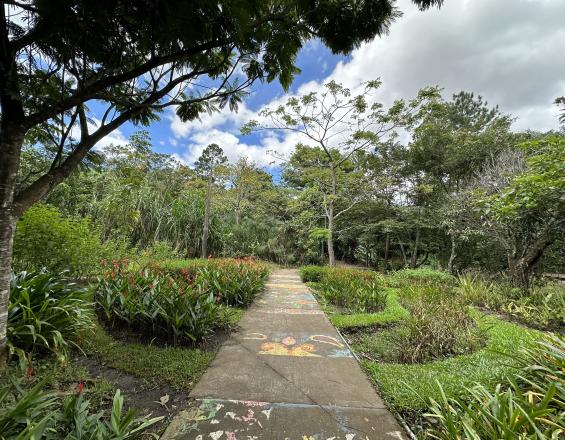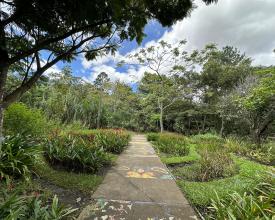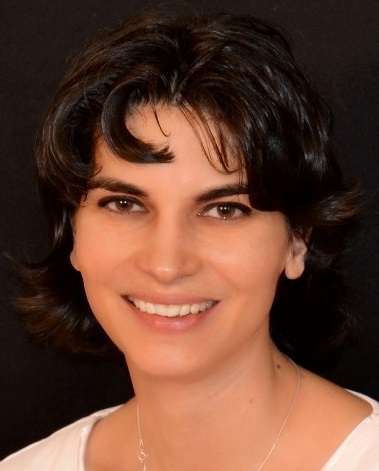
Urbanisme positif à l'égard de la nature : Conservation et autonomisation des communautés dans la région de la capitale du Costa Rica

Le Costa Rica est l'un des pays les plus riches en biodiversité au monde et il est reconnu pour son engagement et son leadership en matière de conservation de la nature. La grande région métropolitaine (GAM) abrite 60 % de la population du pays et concentre de nombreux secteurs économiques. La pandémie de COVID-19 a eu un impact significatif sur les communautés déjà très vulnérables vivant dans la GAM.
Afin d'améliorer la biodiversité et les services écosystémiques, cinq projets innovants ont été développés à San José, où plus de 50 espèces de flore indigène ont été intégrées dans le tissu urbain vert. Plus de 40 femmes ont développé des capacités d'utilisation durable des bienfaits de la nature tout en générant des revenus. 20 partenariats public-privé ont été formés et plus de 19 mesures d'adaptation ont été mises en œuvre pour contribuer à la durabilité des activités de production dans les communautés locales. Aujourd'hui, plus de 20 000 personnes profitent d'activités de bien-être dans les espaces dont l'état naturel s'est amélioré grâce aux projets.
Contexte
Défis à relever
- Défis environnementaux :
- L'accélération de la croissance démographique et la mauvaise planification urbaine ont réduit les espaces verts dans le GAM.
- Défis sociaux :
- Manque de renforcement des capacités des acteurs responsables de la gestion des corridors biologiques interurbains en matière de planification, de gestion, de mise en œuvre des mesures et de coopération.
- Peu de formation à la conception et à la gestion de projets dans les organisations du GAM.
- L'information relative aux initiatives qui promeuvent la conservation et le bien-être urbain est rare.
- Défis économiques :
- Il existe peu d'opportunités rentables dans le domaine de la conservation et du bien-être urbain.
Emplacement
Traiter
Résumé du processus
Les principales composantes de cette solution sont le renforcement des capacités techniques et le volet financier. Le renforcement des capacités financières pour rendre les propositions à financer solides et viables inclut la possibilité d'étendre les initiatives au niveau national.
La plus grande force de cette solution est de renforcer les capacités des entités d'exécution en matière de gestion de projet tout en accompagnant le processus de mise en œuvre des propositions techniques. Ce qui permet d'atteindre les objectifs suivants
- La création d'un sentier de la nature et du bien-être, mis en œuvre par la Fundación Parque La Libertad, qui fait le tour des actions (solutions basées sur la nature) que le parc a installées.
- Le développement d'un corridor biologique communautaire et l'utilisation des déchets de jardin pour produire du compost, ce qui a augmenté les capacités de production et amélioré le revenu familial d'un groupe de femmes entrepreneurs dans une communauté de Santa Ana.
- Le renforcement des capacités techniques d'une coopérative de femmes (Coopetoyopan) qui produit du miel d'abeille Melipona dans une localité urbaine de Montes de Oca et des actions visant à accroître la commercialisation de ce produit.
- L'installation de deux gares routières vertes de conception bioclimatique, dont le prototype a été proposé pour une nouvelle gare routière.
Blocs de construction
Formation technique
Quatre organisations (Coopecabañas R.L., Parque la Libertad, Asociación de Desarrollo de Cipreses de Oreamuno de Cartago (ADICO) et Coopetoyopan) ont bénéficié d'un soutien et de conseils techniques pour concevoir conjointement un plan d'entreprise dans le cadre d'une approche de récupération économique positive avec la nature, avec des objectifs réalisables et une rentabilité suffisante, ou une idée d'entreprise conforme à cette approche, sur la base des capacités des entités exécutant les propositions de projet et des opportunités existantes.
Les capacités techniques et commerciales des organisations financées ont été renforcées pour faciliter la mise en œuvre des projets, qui ont apporté des solutions qui amélioreront le bien-être urbain et contribueront à la conservation de la biodiversité urbaine et des services écosystémiques dans la grande région métropolitaine (GAM) du Costa Rica.
En outre, environ 150 personnes ont bénéficié directement d'une formation sur la récupération verte, les solutions basées sur la nature, le commerce électronique, le compostage et les améliorations logistiques et opérationnelles de leurs organisations. L'essentiel est de fournir un soutien financier en même temps qu'une formation technique.
Facteurs favorables
Le soutien d'un projet qui apporte un appui technique et financier aux processus de formation est fondamental pour mener à bien les différentes activités de renforcement des capacités. La collaboration entre différentes organisations, telle que la formation d'alliances public-privé, a encouragé les organisations chargées de la mise en œuvre à bénéficier d'un soutien plus important et leur a permis de mener à bien le processus (plus de 20 alliances ont été formées). Le soutien institutionnel au niveau du GAM, notamment par le biais du MINAE et du SINAC, a été d'une grande importance pour la mise en œuvre du financement.
Leçon apprise
La formation technique des personnes responsables des projets, dans des domaines tels que l'administration d'entreprise, la gestion de projet et les spécialités techniques du projet à développer, est essentielle pour tirer parti de ce type d'accompagnement. Avant le développement du plan d'affaires, il est préférable que les projets aient déjà avancé dans le développement du prototype de leur idée d'entreprise, ce qui permet une cartographie plus claire des exigences pour le développement et la mise à l'échelle de l'entreprise. La modalité de soutien technique dans ce type de projets qui nécessitent le développement d'un prototype de produit tangible avec des exigences spécifiques de construction et de conception ou des processus biologiques à développer, nécessite un soutien technique qui envisage une modalité mixte face-à-face et virtuelle pour apporter des contributions constructives sur le site de chaque projet.
Soutien financier au développement de projets
Une coopération financière technique a été fournie à quatre projets dans la grande région métropolitaine du pays (GAM), mobilisant des fonds d'investissement publics et privés. Deux appels ont été lancés pour accéder à des fonds non remboursables par l'intermédiaire du Fonds vert urbain et biodiversité (FRUV), administré par Fundecooperación para el Desarrollo Sostenible (Fundecooperación). Fundecooperación a mis des ressources non remboursables à la disposition de quatre initiatives publiques-privées dont l'objectif était de promouvoir des initiatives dans le GAM qui auraient un impact économique sur les bénéficiaires tout en intégrant l'utilisation durable ou la conservation de la biodiversité.
Facteurs favorables
Avant de lancer l'appel à projets, il faut travailler avec les organisations pour préparer les propositions afin d'avoir des propositions de projets solides et efficaces. Le fait de travailler sur le renforcement des capacités avec une approche économique a permis de renforcer les propositions soumises. Le fait d'avoir une organisation telle que Fundecooperación rationalise le processus de déboursement et de suivi des initiatives.
Leçon apprise
Pour les idées d'entreprise menées par des structures de gouvernance complexes telles que les associations de développement, où tous les documents et décisions concernant le projet doivent être approuvés par le conseil d'administration, il convient d'envisager des délais plus longs, qui peuvent doubler ou tripler le temps qu'il faudrait normalement pour des organisations ayant une structure plus simple. Pour les projets futurs dont l'idée commerciale dépend de la validation d'un prototype par le client et/ou l'utilisateur potentiel, il est préférable d'attendre que le prototype ait été développé et validé afin d'achever l'élaboration du plan d'entreprise avec le produit minimum viable déjà développé. Il est recommandé de mener des activités de suivi et d'échange entre et pour les entités exécutantes.
Impacts
- Impacts sur l'environnement :
- Protection et restauration des corridors biologiques interurbains.
- Mise en œuvre de plus de 19 mesures d'adaptation qui soutiennent l'intégration des services écosystémiques et des corridors biologiques interurbains dans les processus de planification, de gestion et de prise de décision de la ville.
- Élaboration d'actions visant à protéger, gérer durablement et restaurer les écosystèmes naturels.
- Impacts sociaux :
- Création d'emplois formels et de sources de revenus associés aux solutions naturelles mises en œuvre.
- Réduction des risques sanitaires pour la population.
- Éducation à l'environnement et changement culturel associé.
- Sensibilisation des citoyens par l'interaction avec la nature dans les espaces d'usage quotidien.
- Impacts économiques :
- Génération de revenus et création d'emplois, en plus de servir d'exemple pour d'autres institutions.
- Promotion de la mise en œuvre de concepts de biodiversité urbaine et d'entreprises vertes avec un potentiel de financement.
Bénéficiaires
- Plus de 249 500 bénéficiaires indirects
- 4 organisations locales recevant des fonds non remboursables
- 4 communautés soutenues




